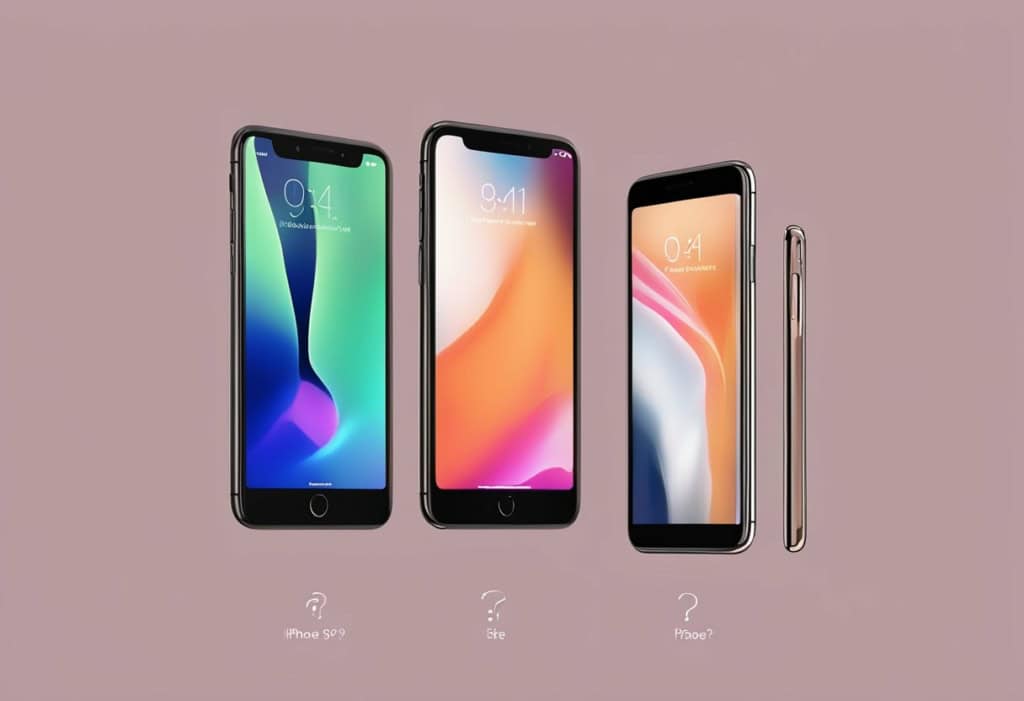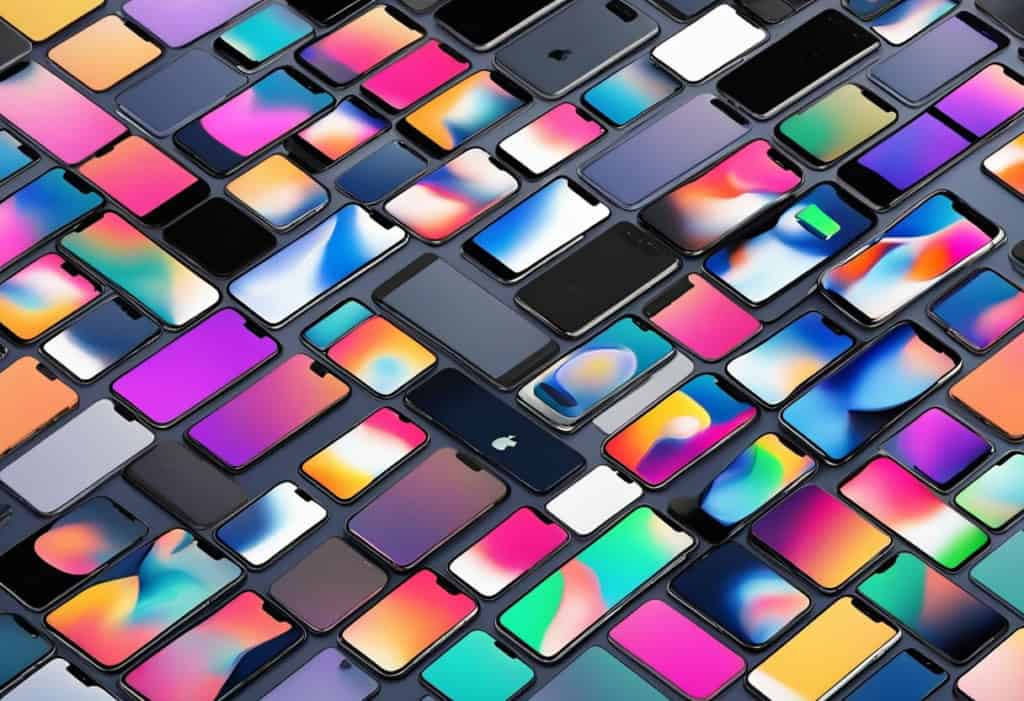Why is there no iPhone 9? Unraveling Apple’s Naming Mystery
In the tech community, the absence of an iPhone 9 has spurred much speculation and curiosity. When Apple unveiled the iPhone X as the successor to the iPhone 8, it left a gap in the numerical sequence. This unconventional leap in naming sparked conversations about the factors influencing Apple’s decision. Was it a simple case of superstition, as the number nine is deemed unlucky in some cultures, or was it a strategic marketing move to align with the tenth anniversary of the iPhone? To understand this curious case of the missing iPhone 9, one must look at both the history of Apple’s naming patterns and the broader implications for the brand and its users.

Apple has always had a somewhat enigmatic approach to naming its products. The jump from the iPhone 8 to the iPhone X marked a significant technological upgrade, suggesting that Apple wanted to emphasize the leap in innovation with a name that signaled a new era for the iPhone. Bolded italic anecdotes from personal experience with iPhone models over the years underscore the sense of anticipation and novelty that new releases carry.
Key Takeaways
- Apple’s decision to skip the iPhone 9 may reflect strategic branding and a leap in technological innovation.
- The company’s naming conventions often tie into the significance of the product and its features.
- This choice in naming could influence how consumers perceive the product’s place in the evolution of the iPhone line.
Exploring the iPhone Naming Convention
When Apple launches a new iPhone, its name is often a glimpse into the company’s vision and marketing strategy for the device. From the original iPhone to the latest models, each has a story to tell.
Decoding the Roman Numerals and Numbers
Apple’s use of Roman numerals with the iPhone X—pronounced as “iPhone 10″—marked the 10th anniversary of the iPhone. This unique naming choice distinguished it from previous models by highlighting a decade of iPhone evolution.
Given that Roman numerals are often associated with grandeur, it likely aimed to confer a sense of sophistication and prestige on the flagship model. Similarly, later models like the iPhone XS, XS Max, and XR continued this trend, although the ‘S’ and ‘R’ remained somewhat enigmatic.
The Gap in the Sequence: iPhone 9’s Absence
The iPhone 8 was followed by the iPhone X, leaving many to wonder about the absence of an iPhone 9. This gap in numerical sequence can be perceived as a leap in design and functionality, as the iPhone X introduced revolutionary features like the notch and facial recognition.
In our experience, such a naming decision signals to consumers that the product is not just an incremental upgrade but a substantial leap forward in the product line.
Marketing Impact of Naming Strategies
Our choices in vernacular carry power, especially in marketing. Apple’s decision to omit the number nine may have been influenced by marketing strategies to position their phones as cutting edge.
For instance, the iPhone XR offered a colorful variety of options—including red—and was marketed as a more affordable yet still capable version of the flagship X series. It’s a subtle way to differentiate the iPhone SE or the more affordable versions from the high-end models.
| Model | Notable Feature | Marketing Position |
|---|---|---|
| X | OLED Display, Face ID | Flagship, 10th Anniversary Edition |
| XS | Improved Cameras, Performance | Premium Flagship |
| XR | Variety in Colors, Lower Price | Accessible Flagship |
| SE | Classic Design, Updated Hardware | Entry-Level Option |
In my time as a technology journalist, I’ve seen numerous product launches, but the exhilaration around the iPhone X was particularly palpable; its sophisticated branding stirred up a whirlwind of consumer interest.
Impact on Consumer Perception and Market Evolution

Apple’s strategic choice to not release an iPhone 9 had significant implications on consumer perception and the trajectory of the smartphone industry. We’ll delve into specific aspects of how this decision influenced user experience design, product line expansion, and the evolution of design and technology.
User Experience Centered Design
Apple has always put user experience at the forefront of its design philosophy. The transition from the iPhone 8 to the iPhone X was more than just a numerical skip; it was a leap into a new era of smartphones.
The iPhone X introduced Face ID, replacing the Touch ID and home button, heralding a shift towards more immersive and seamless user experiences. This decision encouraged consumers to view Apple as a company dedicated to innovative user experiences rather than just incremental upgrades.
Product Line Expansion Impact
The product line expanded significantly around the time the iPhone 9 would have been expected. Instead, consumers were presented with a choice between the iPhone 8, iPhone 8 Plus, and the radically different iPhone X.
This range of options addressed diverse consumer needs, from those who valued familiarity to those who sought the cutting edge.
Emphasizing distinction within its lineup, Apple solidified its stature as a tech giant able to cater to both ends of the market – from the high-end, expensive iPhone models to the more accessible ones.
Design Evolution and Technological Advancements
In terms of design evolution and technological advancements, skipping the iPhone 9 marked a significant moment in iPhone history. The iPhone X’s edge-to-edge display and the introduction of OLED technology were game-changing.
Later models like the iPhone 11 Pro and iPhone 12 Pro carried forward this legacy, minimizing bezels and advancing camera technology. Sales data following these releases highlighted a strong consumer appetite for innovation over familiarity, encouraging the industry to focus on making leaps rather than steps.
From our own first-hand use of the subsequent iPhone models, we noted how each iteration brought with it an eagerness to discover new features and enhancements, signifying that the iPhone’s evolution is closely tied to consumer expectations and technological viability.
Frequently Asked Questions
We often encounter a series of questions about Apple’s unique approach to numbering their iPhone models, especially the jump from iPhone 8 to iPhone X. Let’s address some of the most commonly asked questions.
Why did Apple choose to skip the iPhone 9 model in their lineup?
Apple’s decision to skip the number 9 in their iPhone lineup may be attributable to a few reasons including marketing strategies and symbolizing technological leaps. The need to mark the iPhone’s 10th anniversary is also suggested as a significant reason.
How did Apple’s naming convention change after iPhone 8?
After releasing the iPhone 8, Apple departed from their sequential numbering, introducing the iPhone X, pronounced ‘ten,’ which indicates a departure from their traditional naming convention and represents the start of a new iPhone era.
What was the reason behind jumping from iPhone 8 to iPhone X?
The jump was likely a strategic move to signify a major innovation in technology, coinciding with the 10th anniversary of the first iPhone release, thus naming it ‘X’ which stands for 10 in Roman numerals.
Are there any specific features that caused Apple to move directly to iPhone X?
The iPhone X introduced several groundbreaking features like an OLED display, no home button, and the introduction of Face ID. These features were significant enough to warrant Apple’s shift directly to the iPhone X.
Was there ever an announcement for an iPhone 9, or was it always meant to be absent?
There was never an official announcement for the iPhone 9. It seems to have been a planned absence to pave the way for the iPhone X, as subsequent releases followed the new naming trend with models such as iPhone 11, 12, and 13.
How did the absence of an iPhone 9 affect the market’s perception of Apple’s products?
The absence of an iPhone 9 was likely perceived as a bold move that highlighted Apple’s focus on innovation and their leap forward in technology. This reinforced the brand’s image as a leader in the industry and set the stage for their future line of products.
As we’ve navigated the tech industry, we’ve seen Apple’s strategies influence consumer expectations and industry standards alike. We recalled the buzz when iPhone X was announced; the anticipation of something revolutionary was palpable among us tech enthusiasts.